
After a lengthy hands-on Final Fantasy XVI seems incredible - but the depth of its RPG credentials remains unclear
Whatever way you look at it, Final Fantasy XVI is a big moment. So it’s perhaps not surprising that my mind was awash with thoughts going into an extensive - and final - preview event. To be clear, this was a special version made for media to experience, and contents may differ from the final version.
FF16’s developer, Creative Business Unit III, has some serious chops. It’s developed main-line, numbered Final Fantasy titles before - but those it crafted, FF11 and FF14, were MMORPGs. Making the next single-player flagship for the franchise is arguably an entirely different ballgame - and in many ways, the team behind FF16, which does admittedly include many an FF12 and FF Tactics veterans - hasn’t shied from the task. In fact, they’ve arguably made it harder on themselves.
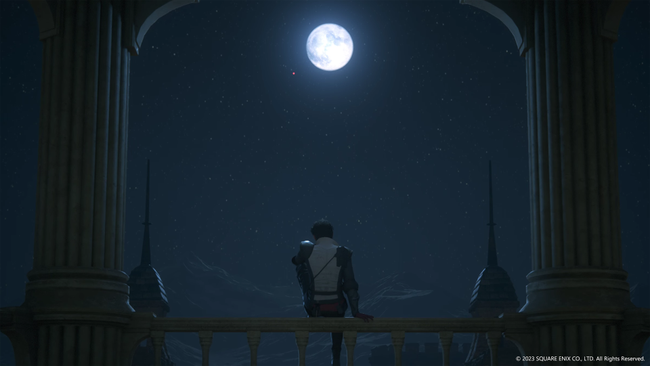
That spike in development difficulty comes in part because of what a radical departure FF16 appears to be. Final Fantasy as a franchise has always been about changing things up, breaking new ground, and the like - you only have to look at the radical differences between Final Fantasy I, II and III to see that “change” is as much a part of the series’ DNA as Chocobos and Moogles. Yet that acknowledgment also won’t do anything to fully alleviate any concerns that longtime fans might have that the game is abandoning what they love.
That fact perhaps explains Square Enix’s generous setup for this preview event. Media were able to play around six hours of the game, stretching from the opening moments of the adventure through to later sections. It’s the rare hands-on that appeared to encompass much of the experience - from the opening to later-game open zones, linear story sequences through bombastic Eikon battles. While not everything landed quite as well as I was hoping, the game is shaping up to be one of 2023’s best action titles - and I’m left curious how the RPG elements will get expanded on with the full release next month.
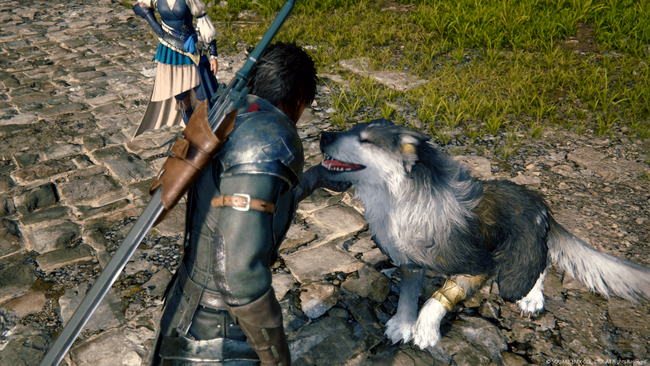
Speaking of combat, there’s a certain expectation that is set when an action game’s combat director previously worked on Devil May Cry 5. For the most part, those expectations are met - though players looking for FF16 to scratch exactly the same itch that Capcom’s modern masterpiece did might be left disappointed. While Clive could shift between channeling Phoenix, Garuda, and Titan throughout our demo - his basic attack combo doesn’t change. Rather, switching Eikons is far more situational.
Phoenix lets you use a stinger attack that can be followed up by either a melee or magic attack. Garuda can take advantage of flinching enemies when you reach the halfway point of their stagger gauge to chain them in place. Titan can block attacks, and if timed properly will parry attacks. All Eikons have their own special attacks which run off a cooldown. These cooldowns are independent of each other, and beyond the game’s UI keeping track of which of these attacks are usable - Clive’s character model will react when a special attack has recharged, color-coded to the Eikon in question.

One worrying aspect of the combat is the obsession the game seems to have for cinematic flourishes in combat; against boss enemies, occasionally they’ll pull off a unique animation, where you’ll be tasked with either dodging or attacking during a QTE - it breaks up the pace of combat considerably, and doubly so during Eikon Battles.
While not an RPG, Final Fantasy XVI’s Eikon Battles actually most acutely reminded me of Bayonetta 3 - meaning they offer a change in gameplay to break up the standard combat and battles. Across the hands-on, I played two Eikon battles - though it’s worth noting that across the full game, each Eikon battle will take on a different format with a different style of combat. The first you’ll encounter, for instance, is essentially a rail shooter.
Much like with Platinum’s latest release, I find myself coming away from my preview of CBU3’s take on the concept mixed. The visual spectacle is impressive, but I wonder if each battle’s bespoke design will have the depth to keep them all interesting. A feast for the eyes can only take you so far, after all. The two demoed here did leave me somewhat wanting, though I’m sure there will be fights in the full release that I vibe with more than the ones on offer here.
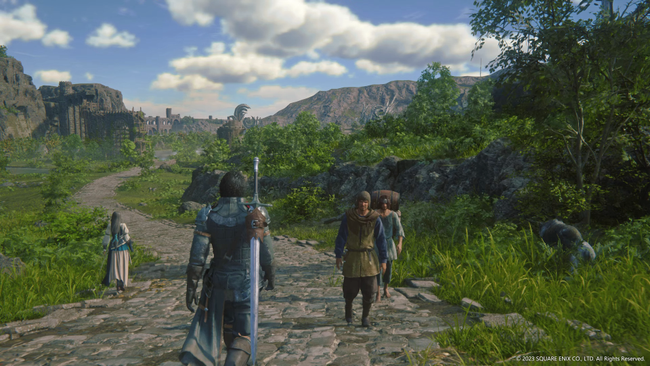
As for the story, I don’t want to talk about specifics; but this is arguably the area where the preview was most outright successful. It showed me just enough of the story to get me interested in where the story will go next - and demonstrated that this is a new kind of Final Fantasy. It wouldn’t be entirely unreasonable to say that FF stories have adhered to some structural and narrative tropes - but FF16 is going to be a very different sort of narrative indeed. The early hours alone make that clear - and the deeper you go, the more pronounced it becomes.
It’s hard not to shake the feeling that the FF16 dev-team are big fans of Game of Thrones, as many of the characters and story beats early on seem reminiscent of the vibes that George R.R. Martin’s Dark Fantasy classic. Some would say that it’s out of tone for Final Fantasy; but thinking back to entries such as FF4, I’d have to disagree, and I’m certainly curious to see how the lighter moments - presumably during sidequests - manage to paint a wider picture of the game’s world and people. In story and worldbuilding, one can sense the guiding hand and experience of years of FF14 - with knowledge built there leveraged to build a new and enticing world.
It’s worth mentioning the voice cast, too. Final Fantasy XVI features a series first - an English-first approach. While the story’s outline was of course written in Japan and in Japanese, it was then localized, and the dialogue recorded in English. That script and performance were then translated back into Japanese. The result for Western players is a far more naturalistic Final Fantasy with a more natural cinematic flair to its performances - and it feels sure to be an element of the game that will impress.
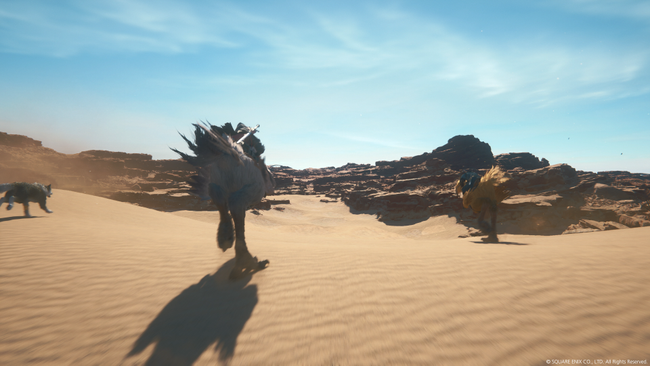
It’s worth mentioning at this point that while we were able to see the existence of side quests in the game, during our preview session we were explicitly told to stay to the critical path; so it’s hard to gauge exactly how much side content the game holds, particularly early on. Similarly, we had the chance to preview one of the game’s more open-zone areas in the Three Reeds; but similarly, it’s hard to get a full grasp of how the content will feel when playing it naturally when you’re restricted from engaging with the sidequests available in the area.
From a glance the scope of these more open-ended areas reminded me very much of the sort of zones you might find in CBU3’s history with Final Fantasy XI and XIV; not quite huge, spanning environments, but also considerably more than just a linear affair. For a more “Western RPG” comparison point, I’d say it falls in line with the scope that CD Projekt Red set for The Witcher 1 and 2.
The game’s RPG elements are most obvious at Cid’s Hideaway - the main hub of the game, where you’ll interact with NPCs, shops, engage with the training room, and much more. It’s truly a hub that reminds me, particularly of my experience with Capcom’s Monster Hunter series; it’s a home in every sense of the word for Clive, and there’s a hope that it will evolve over the course of the game. We already know that the missions you collect here will be what pushes you forward in both the story-linked linear areas, as well as the more open-ended zones mentioned above.
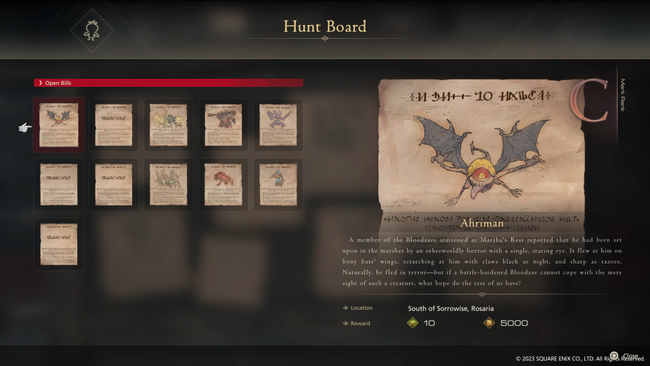
What’s perhaps most curious is that this preview beat of Final Fantasy XVI was sold as the ‘RPG beat’. It was where we were going to see the title’s role-playing credentials and understand the depth beneath the action combat. But I walked away not really much wiser as to how deep that particular rabbit hole goes.
For all intents and purposes, this extensive hands-on gave the air of an action game - though a particularly lavish one with some role-playing hooks. There’s no shame in that, either - we cover plenty of games like that on RPG Site, such as the recently-released Star Wars Jedi Survivor. But beyond giving us a glimpse into a story that seems worthy of Final Fantasy’s narrative legacy in its ambition, this hands-on left it still too hard to tell just how tightly the RPG mechanics fit into the game - or indeed tell how integral or extensive they are.
Whether that was an intentional decision by Square Enix is impossible to tell; though it does leave us with some pressing questions as we wait for the game’s release. For now, Final Fantasy XVI is setting itself up to be one of the most exciting releases of the year - though how much meat there is on these sturdy bones for RPG fans really remains to be seen.